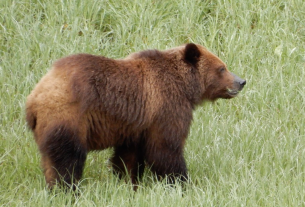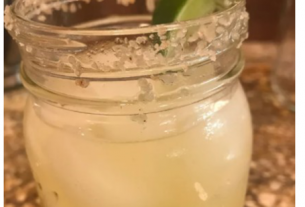By John Chalmers on the Winter 2021/2022 Edition

Never out of sight of mountains, our circuitous route crossed the Rio Chacala four times, providing a fine view of the river itself and the surrounding scenery. At one long bridge our group stopped not just to stretch our legs but to walk the bridge and record the scenery with our cameras – mountains, jungle, rocky river beds and clear running water.
Occasionally we would pass small and perfectly groomed fields of corn, cattle grazing at roadside, men travelling by horse or donkey, and plantations of prickly pear cactus cultivated to produce its nopales. The flat cactus pads are cut to produce nopalitos, then cooked and eaten, often diced and included in salads and soups. Trees we saw in our travels are grown for a variety of fruits and products ranging from avocado to dragon fruit to tamarind.
Upon arrival at the Café Cuzalapa on the main road of the town, 2,120 feet above sea level and in the state of Jalisco, we were welcomed by women of the Color de la Tierra (Color of the Earth) co-operative, and treated to a piping hot cup of coffee and a homemade cake made of mojote flour; the taste reminded me somewhat of banana loaf. With translation by Chito, we were given a presentation about the history of the co-operative and told about the uses of many types of trees and plants in the area that are used for sources of food or for medicinal purposes.
Next we went for a short walk to see where the organic coffee was grown, not in an orderly plantation of evenly-planted bushes, but beans grown in the shade of towering trees. From there the coffee “cherries” are picked, then dried, then de-husked to extract the coffee beans, then roasted at the Café Cuzalapa.
Packaged for sale, the coffee is available at the café’s shop, as well as pastries and other products, including embroidered garments.
My purchases included liquid honey, pastries, coffee, and a souvenir mug, which had special meaning for me. The mug has an illustration of a petroglyph we saw on our walk to the coffee bushes. Presumably created by ancient people and etched into the flat surface of a huge rock, it is called juego ancestral, or ancestral game. I imagine that perhaps the game was played with pieces not unlike checkers, and moved around to reach a goal or target in the design, perhaps like a game of Snakes and Ladders. What impressed me most was thinking that the petroglyph is from prehistoric times, indicating that the area we were visiting was populated thousands of years ago.
Our tour concluded when we returned to the café, again seated in a room to ourselves and were served a truly Mexican lunch. It consisted of chicken pieces in a tasty pumpkin sauce with a hint of peanut, perhaps also used in preparation. The entrée was accompanied by pieces of squash and a delicious nopalito salad, which used tiny pieces of the type of cactus we had seen growing. A flavorful fruit drink was pro-vided as a beverage.
One cannot help but admire the initiative of the women who started the cooperative just 20 years ago. The success of producing Cuzalapa coffee is a credit to the co-op’s founders and those who have continued its operation in providing a business and industry for a small mountain town.
For further reading, there is a good story you can see when you click here. For info about the Mex-Eco Tours trip to Cuzalapa, click here, and visit the Galería Mex-Eco to purchase the coffee!













